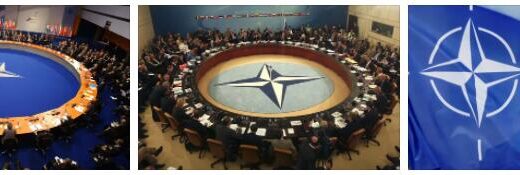Belarus Economy
Until the Second World War Belarus, divided between Poland and the USSR, was essentially an agricultural region. After the war, completely included in the borders of the Soviet Union, its economy had diversified, with a strong industrial development: Belarus of the Soviet period was in third place in the world ranking of tractor manufacturers, after the United States and Japan. but it was also one of the leading manufacturers of motorcycles, trucks and other vehicles, televisions, appliances and computers. Its economy was strongly integrated with that of the other republics of the USSR: 50% of its production (agricultural machinery and products, military equipment, chemicals) was destined for the Soviet internal market, from which it received almost all of its needs in raw products and fuel, at discounted prices. The disintegration of the USSR and its economic system in 1991 had a devastating impact on the new state entity which, suddenly, was deprived of that trading system that had guaranteed the satisfaction of its energy needs and a secure outlet for its industrial and agricultural products. The need to procure energy and raw materials on international markets, with payments in hard currency, led to rapid and heavy indebtedness, while most industrial products were not competitive enough to maintain the level of exports. Dynamics that led to very strong inflation, repeated devaluations of the currency (the Belorussian ruble) and an overall impoverishment of the population. The same crisis also involved the agriculture: in the five-year period 1989-93, the production of meat, sugar and milk, up to then the most important in the agricultural sector, decreased significantly. Beyond the market problems, moreover, the legacy of the Chernobyl disaster has weighed and continues to weigh in a very negative way: a fifth of Belarus’ arative has been contaminated byradioactive fall-out and will remain unusable for decades, particularly in the southern areas of the country, where a significant share of agricultural and livestock production was concentrated.
After almost a decade marked by serious difficulties, following the breakup of the Soviet economic system in which it was completely integrated, the economy of Belarus started to grow again with the beginning of the century. XXI, despite various obstacles and bottlenecks – partly dependent on the political choices of its leadership, defined as “market socialism” and aimed at maintaining strong state control to the detriment of business freedom, in contrast to the trends prevailing in the rest of Europe. Visit beautypically.com for Europe economy. These same choices, moreover, have guaranteed good protection for the weakest sections of the population: the distribution of income among families is among the least unequal in the world and unemployment (less than 3% of the active population in June 2005) remains at a very low rate and far below that of all other former Soviet republics. The macroeconomic data for 2004 see GDP growing by 11%, at around USD 22,800 million, and were even better than the most optimistic forecasts; foreign trade is growing very strongly (+ 37.5% in 2004), to a considerable extent also foreign investments (approx. + 17% in 2004), which however are still scarce in absolute terms, also in this case due to the general political choices of the government, not very encouraging for foreign investors despite the decision to create ” free zones ”with tax concessions. The growth recorded in the period 2001-2005, in any case, is closely linked to the maintenance of a close relationship with neighboring Russia, which in the same years experienced a great expansion linked to the high international oil prices and which alone covers more than half of Belarus’ trade (57.9% of the total in 2004). Today the primary sector, which accounts for 7.8% of GDP, continues to guarantee Belarus substantial food autonomy: the production of cereals (wheat, barley and rye), potatoes, meat, milk and vegetables abundantly cover the consumption of the population, even if they no longer constitute an important item of exports. The production of flax was significant, this too largely destined for the domestic market. The secondary sector (36% of GDP), after the serious crisis of the decade 1990-2000, started to grow again (+ 15% in 2004) especially in the engineering sector (production of machine tools and industrial and agricultural vehicles) but with a growing dynamism also in refining, in the production of fertilizers, in cement and in the electronics sector. On the other hand, the production of wood and paper remained stagnant, especially due to the consequences of Chernobyl, given the long-term radioactive contamination of vast wooded areas. Machinery, televisions, household appliances, chemicals and textiles also represent the main export items; imports are represented primarily by gas, oil and raw materials, and to a lesser extent by consumer goods. In addition to Russia, which alone accounts for more than half of Belarus’ foreign trade, the main trading partners are the Germany, Poland and Ukraine. As for the tertiary sector (56.2% of GDP), this too recorded an expansion in the early years of the century. XXI, linked to the general growth of the economy, but still seems quite far from the dynamics that characterized most of the other European countries, including some states of the former USSR. An important phenomenon – the only notable one in the panorama of the Belarusian financial market – is represented by the growing presence of Russian private capital in industry and services, presumably in anticipation of a future unification of the two countries.



